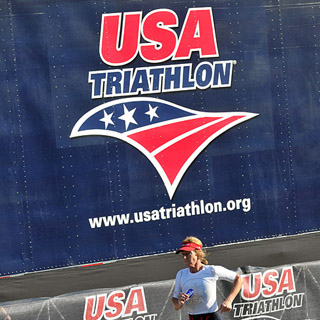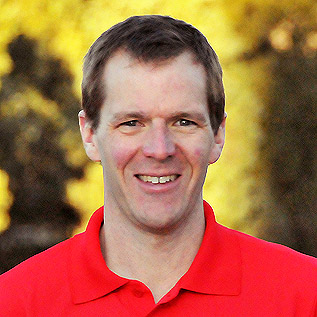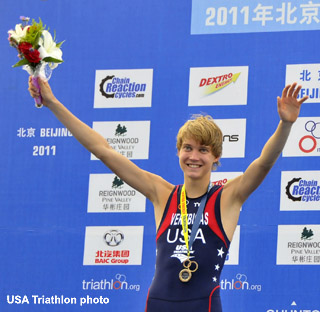Andy Schmitz explains new High Performance grants

USA Triathlon announced last week that it was offering two new High Performance grant opportunities totaling $80,000 to qualified coaches to encourage development of youth and collegiate programs with the potential to produce medalists in Olympic and draft-legal World Championship competition.
The grants are divided into two segments – a $20.000 Collegiate Draft-Legal program and $60,000 which will be devoted to Draft Legal Elite Squads. The minimum criteria for the grants include that the applicant programs be coached by a USAT certified coach with draft legal experience; they must be organized for risk management purposes and carry adequate insurance; they must be devoted year round to elite draft legal triathletes capable of rising to the Olympic level; they must be willing to participate in USAT High Performance Coaching symposiums; they must be willing to match grant funds with independent revenue sources; and must offer access to housing, training facilities and medical and mechanical and technical resources.
Applicants must submit a business plan by February 28 to Andy Schmitz at USA Triathlon, and should include program philosophy, organizational structure, measurable process and outcome goals and budget.
The USAT defined the grants as “effort to increase the exposure and competitiveness of draft legal racing at the collegiate level and to provide opportunity for the growing number of Junior Elites willing to commit full-time to our sport while in college.” A USAT press release cited examples of the kind of programs they are looking for as “university teams specializing in draft-legal athlete development; a race director offering a competition format with multiple race elements (team pursuit, mixed relay, etc.) to collegiate pipeline athletes.”
USA Triathlon High Performance director Andy Schmitz said some examples of the structure and focus of teams might include, for example, those coached by Paulo Sousa and Darren Smith. Schmitz acknowledged that those squads were made up of many international stars, but added that the grants would be specifically devoted to US athletes only. “The point is we want to encourage innovative thinking – and it has been proven that operating in a team with great athletes from other countries can help develop athletes from our own country. We have come to see that making all national team athletes conform to a one-size-fits-all coaching organization is limiting and we would like everyone to know that we are open to new ideas.”
Andy Schmitz answered questions from Slowtwitch about the programs in a telephone interview this week.

Slowtwitch: What is the new about these grants and what are their roots?
Andy Schmitz: Actually these new $80,000 grant opportunities are an evolution from the USAT High Performance Team (HPT) program launched in 2008. That program arose when USAT evaluated youth and junior training and development in the USA. While our sport is not as established or mainstream as sports like swimming and soccer, we saw a few fundamental gaps in our program. First is the need for a stronger grassroots program to expose young athletes to the sport. Second is the establishment of a model to facilitate the age-appropriate development of talented athletes with aspirations to compete at a high level. These HPTs, not too dissimilar from USS swim clubs and travel soccer teams, have driven a double-digit growth in our Youth Elite (13-15 year old) and Junior Elite (16-19) draft-legal race format. Each team is encouraged to develop a feeder system – youth teams, youth race series, talent identification events, etc. – all of which help to increase the recreational reach of our sport to a younger population. USAT is also in the process of hiring a Youth Manager who will be tasked with developing and managing a nationwide initiative to increase the exposure and accessibility of multisport to youth. This will be accomplished through the development of events, camps and programming for athletes, parents and coaches alike.
ST: How will you oversee these new programs?
Andy: This grant program falls within the scope of our High Performance Department. Our Number 1 charge as the National Governing Body for the Olympic sport of triathlon is to win medals at major international competition, with the primary focus on the Olympic Games, Pan American Games and the ITU World Triathlon Series. We are here to advise and support these new programs and will hold grant recipients accountable to the framework and performance standards we establish together.
ST: Tell us about the growth of the USAT High Performance Team Program since its inception in 2008 – and how these new programs will continue its growth and evolution?
Andy: In 2008, the USAT High Performance Team Program made a four year investment in teams with coaches who worked in the squad concept that were systematically designed to identify, develop and train youth and junior athletes in the draft-legal high performance Olympic Games pathway. These grants descend in value each year with a philosophy that teams should be self-sustaining through membership fees, sponsorships, etc., at the end of the cycle. USAT awarded grants to eight teams in 2008. With the grant size decreasing year-by-year, it enables us to bring new teams into the cycle. USAT awards up to three new grants each year. The HPT designation is awarded to teams who meet minimum eligibility standards, whether or not there are grant monies available. We now have 18 designated High Performance Teams across the country – and look to grow over 20 when 2012 designations are made.

ST: How were those initial HPT grants structured?
Andy: Our objective was to provide a support model that included initial seed money and ongoing support, but at a reduced level annually such that teams great to be self sufficient. We invest $5,000 in first year teams. So long as teams continue to make progress and meet eligibility standards, grant support in the subsequent years is awarded as: $3,000, $2,000 and $1000 respectively.
ST: So what is different about these new grants?
Andy: The premise for these new collegiate and elite squad grants is to provide an evolution in our framework. We want to see increased support opportunities for current and emerging elites, athletes "graduating" from the HPT program and those discovered by Barb Lindquist in the Collegiate Recruitment program. While the HPT program has a fixed application process with distinct criteria, these two new grant opportunities provide a greater degree of flexibility for entrepreneurial thought. We have established minimum expectations, most notably the focus on the draft-legal format.
ST: Tell us about the $20.0000 collegiate grant.
Andy: This $20,000 is earmarked for collegiate oriented programs that could evolve to compete with the Elite Triathlon Academy. Ideally this will provide a launching point for the growing number of athletes who are graduating from high school and who want to focus on triathlon while in college. Ideally this will also provide support for eventual inclusion of triathlon in NCAA competition.
ST: What efforts are in place to accomplish this?
Andy: The NCAA Committee on Women's Athletics (CWA) will conduct a final review this summer to consider its support for triathlon as a potential NCAA emerging sport for women. If recommended by the CWA, the proposal will be sent to the NCAA Divisional Legislative Councils for final approval.

ST: How will the remaining $60,000 be distributed?
Andy: The next $60,000 will be for elite level squads focusing on draft-legal performance with an objective of world-class performance. These are expected to be athlete-centered, coach-driven programs. As mentioned, we want to preserve the entrepreneurial spirit, but have outlined minimum criteria for consideration.
ST: You say you are open to a wide variety of applications. So how will you split up the remaining $60,000 in new grants?
Andy: This grant structure is wide open. When all the applications are in, we may only have one viable candidate. And if they hit a home run, they may get the whole $60,000 grant. Or if we have three applications we are equally excited about, the $60,000 may be split three ways.
ST: What are some other requirements of the grants?
Andy: The teams must be to match our funding. If we award a grant, programs should have additional sources of revenue identified. Certainly it will take more than $20,000 or even $60,000 to produce a viable organization with coaches, facilities, and other practicalities such as athletes' housing and travel.
ST: What is the status of the emerging elites now in the pipeline?
Andy: We enjoyed a very successful weekend at the Beijing World Championships last September. Our Junior men stole the show with a dominant victory by Lukas Verzbicas, bronze medal for Tony Smoragiewicz and 13th place finish for Ben Kanute. Kelly Whitely had a strong showing at 5th in the Junior Women's event. Greg Billington and Kaitlin Shiver each narrowly missed the podium, both finishing 4th in the U23 competition. The U23 women also posted 9th and 16th place finishes by Lauren Goldstein-Kral and Lauren Goss respectively. We also have a strong crop of athletes at the Elite Triathlon Academy, a joint venture between USAT, USOC and a private entity that operates the Academy in Colorado Springs. We have had a good experience with the private entity headed by Keith Dickson who was the mastermind behind Multisport Madness. That team is based in Chicago and lot of top athletes migrated from there to the Elite Academy.
ST: With your commitment to decentralized, outside-the-box approaches and structures, who is running the show at the Triathlon Academy in Colorado Springs?
Andy: Keith Dickson is currently serving as Team Director and travels to Colorado Springs regularly to interact with Academy coaches, athletes and stakeholders.


